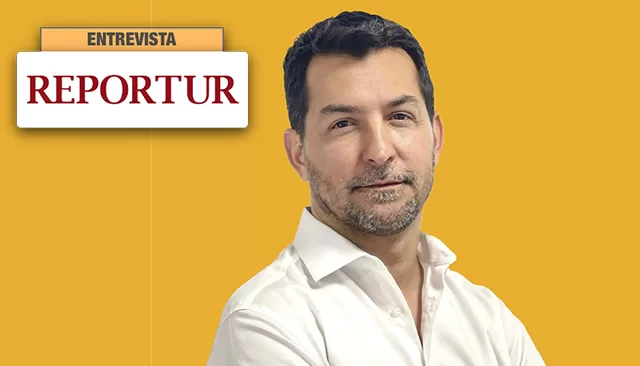NY- In February, First Republic Bank’s wealthy clients were withdrawing money from their accounts in large quantities. The bank tried to stem the surge by offering higher rates on certificates of deposit. Even that was unappealing, according to The Wall Street Journal.
Jim Herbert, 78, the bank’s founder, normally a comforting presence, slammed the table down during an all-employee meeting. We have to get more deposits, he said, according to people familiar with the matter.
That was before the March banking panic that brought down two other competitors, Silicon Valley Bank and Signature Bank. First Republic’s problems only got worse after that.
On Monday morning, regulators seized First Republic and struck a deal to sell most of its operations to JPMorgan Chase & Co., the largest US bank.
The First Republic collapse marks the second worst bank failure in US history, after the fall of Washington Mutual Inc., in 2008. It also marks the end of what was considered one of the most successful strategies in banking: attracting wealthy depositors and offer them five-star service.
Few could have anticipated the speed and scale of the March bank run. First Republic lost more than half of its deposits, some $100 billion, in the span of just a few days. However, as Herbert’s urgent message reveals, the bank’s operations were already fraying.
The First Republic’s downfall was triggered by the rapid series of interest rate hikes by the Federal Reserve, which led depositors to look elsewhere for better yields. That meant he had to pay more to keep them, just as rising rates were hitting the value of his mortgage portfolio.
In hindsight, it was an obvious problem, but the First Republic, among others, believed it would survive the Fed’s inflation fight without a problem.
Focus on customers
This was not supposed to happen. San Francisco-based First Republic was a big bank with a small-town feel, the quintessential relationship bank. The logic was that wealthy clients wanted top-notch customer service more than a few extra dollars of interest on their deposits.
First Republic pooled these customers, paid them minimal interest, and used their deposits to finance mortgages. More deposits meant more loans for condo projects in Manhattan or second homes in Hawaii.
First Republic received much more from these borrowers – 3.03% in interest collected on average in 2021 – than it paid to depositors, 0.12% on average.
In a world of ultra-low interest rates, this outdated model was lucrative. First Republic’s annual profits quadrupled in the decade to 2021. The bank became one of the 20 largest in the US and, by some standard measures, had a valuation well above those of banks such as JPMorgan Chase & Co. . and Bank of America Corp.
“Deposits, deposits, deposits” and “accounts, accounts, accounts” were mantras that co-CEO Hafize Gaye Erkan reportedly repeated at the end of weekly all-staff meetings, former employees revealed.
Increase the pressure
Herbert’s return coincided with the beginnings of the Fed’s inflation control campaign. The First Republic doubled down. The bank thrived during a series of relatively modest Fed rate hikes between 2015 and 2018, and there was no reason to believe this time would be any different, the bank told investors in public filings.
Behind the scenes, the pressure was mounting. With Treasuries and money market accounts suddenly offering 4%, the best customer service in the world would struggle to convince wealthy clients to keep a near-zero-yield checking account.
Customers who had home equity loans or other lines of credit were encouraged to keep those funds in First Republic deposit accounts, former bank employees said. Until then, customers often transferred money to other banks.
At the end of 2022, the bank had $176.4 billion in deposits, 68% of which were over the Federal Deposit Insurance Corp.’s $250,000 insurance limit, meaning customers were not guaranteed to recover that amount. money if the bank failed.
First Republic increased deposits 13% in 2022, but paid dearly for them. In the fourth quarter, First Republic paid $428 million in interest on deposits, compared with $20 million a year earlier.
Rising costs of deposits were an especially big problem for First Republic because much of its income comes from low-yield, fixed-rate mortgages that take years to mature. It hasn’t dabbled in other products like credit cards and auto loans that can help balance a bank’s loan book.
In 2022, more than half of First Republic’s loans were residential mortgages at an average rate of 2.89%. The rising rates wiped some $22 billion off its market value.
Losses on paper weren’t that big of a problem, as long as the bank didn’t have to sell the loans. However, if you needed to cover withdrawals, the realized losses would have eaten into the capital the bank needed to operate.
The company’s shares ended 2022 down around 40%. They plunged after the failure of Silicon Valley Bank on March 10.
Clients, no longer content to receive next to nothing on their deposits, had begun withdrawing their money, slowly at first, then all at once.
First Republic tried to contain the panic. On March 10, the bank issued a statement noting that it had a diversified group of depositors and “more than $60 billion of unused available lending capacity at the Federal Home Loan Bank and the Federal Reserve Bank.”
As part of the deal reached Monday, JPMorgan said it will take over First Republic’s $92 billion in deposits – insured and uninsured. It is also acquiring most of the bank’s assets, including some $173 billion in loans and $30 billion in securities.
The FDIC will share losses on First Republic’s loans with JPMorgan Chase. First Republic’s 84 branches will reopen as part of JPMorgan on Monday for normal business hours, and customers will have full access to their deposits, the FDIC announced.
– Ben Eisen and Ben Foldy contributed to this article.




